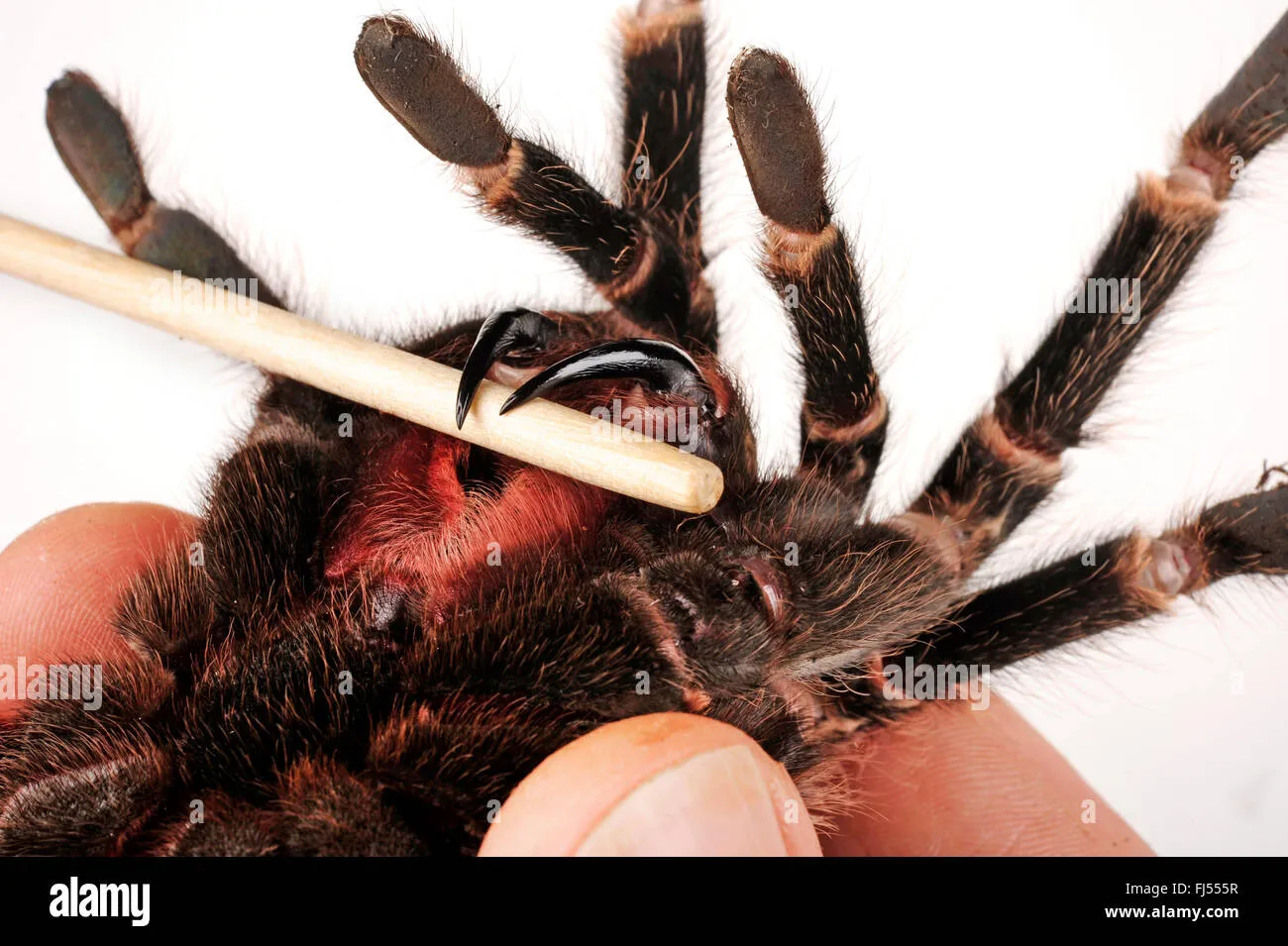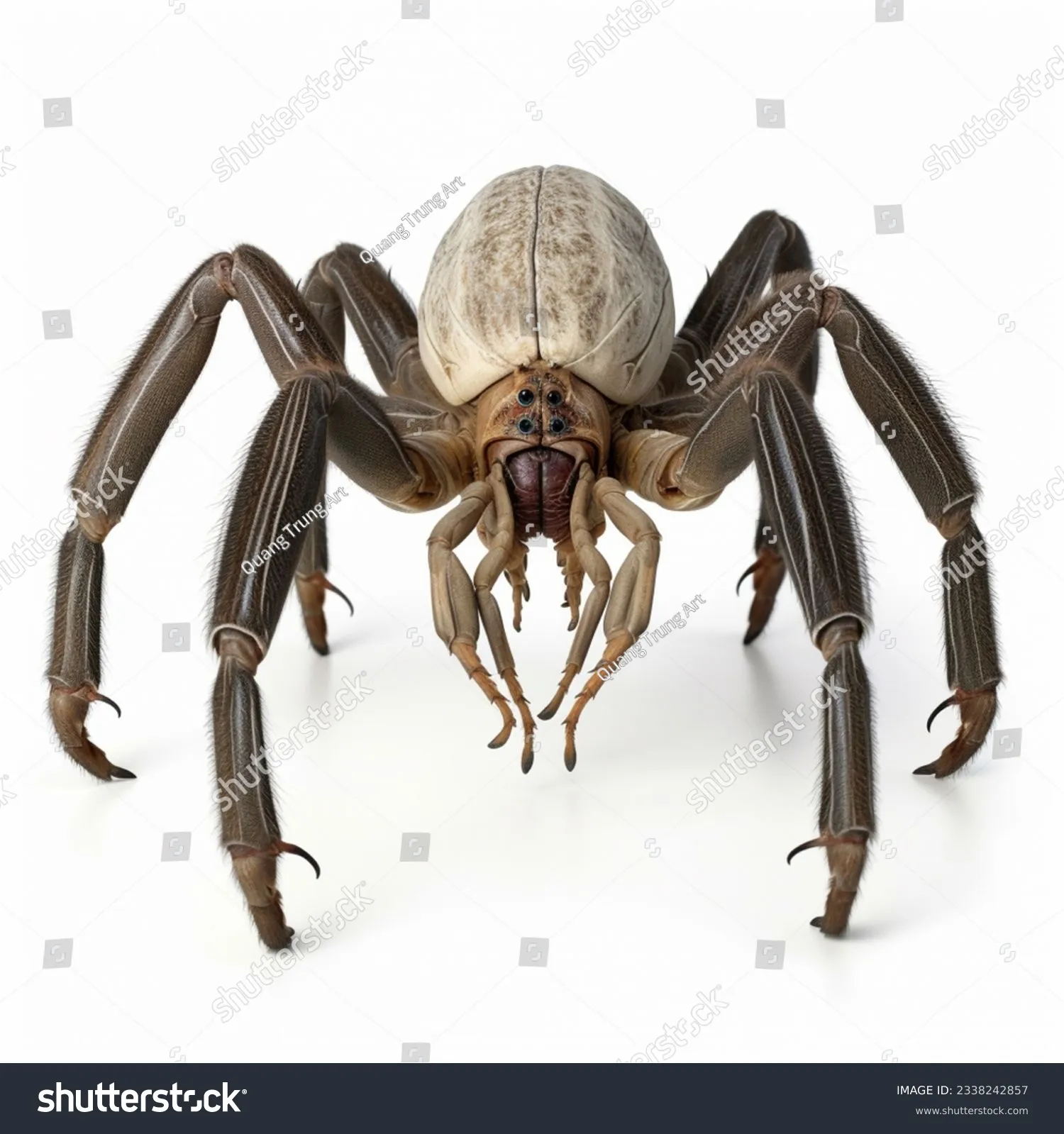What are Bird Eating Tarantula Fangs
Bird eating tarantula fangs are specialized mouthparts of tarantulas, a group of large and often hairy spiders belonging to the Theraphosidae family. These fangs, also known as chelicerae, are not directly used for chewing; instead, they serve a crucial role in capturing and subduing prey. The fangs are located at the front of the tarantula’s cephalothorax (the combined head and chest) and are typically downward-pointing, though their exact shape and size can vary depending on the tarantula species. These fangs are not used for chewing food; they are primarily for piercing prey and injecting venom, a process that starts the breakdown of the prey from the inside. Despite their name, bird-eating tarantulas do not exclusively feed on birds, but they are capable of consuming them, along with other small animals like insects, lizards, and rodents. These fangs are a significant part of what allows them to survive in their natural habitat.
The Function of Bird Eating Tarantula Fangs
The primary function of bird eating tarantula fangs is to capture prey and deliver venom. When a tarantula encounters potential food, it uses its fangs to pierce the exoskeleton or skin of its victim. The fangs act like hypodermic needles, allowing the spider to inject venom directly into the prey’s body. This venom is a complex mixture of toxins that serves multiple purposes. Firstly, it immobilizes the prey, preventing it from escaping. Secondly, it contains enzymes that begin to break down the internal tissues of the prey. The tarantula then uses its fangs to further manipulate the prey, tearing it apart and consuming the pre-digested fluids. This unique feeding strategy is crucial for the survival of these spiders, as they are unable to chew their food. The fangs are, therefore, essential for both hunting and feeding in this species. The size and power of the fangs also dictate the size of prey the tarantula can subdue.
How Tarantulas Use Their Fangs

Tarantulas use their fangs in a coordinated manner, employing both physical strength and venomous injection. Initially, the tarantula stalks its prey, using its senses to locate and assess the target. When close enough, the tarantula rapidly lunges forward, utilizing its fangs to impale the prey. The fangs are driven downwards, often with considerable force, to penetrate the outer layers of the prey. Simultaneously, the tarantula injects its venom through channels within the fangs. This venom paralyzes the prey and starts the digestive process. Once the prey is subdued, the tarantula will maneuver the prey, using its pedipalps (small leg-like appendages near the mouth) to hold and position it for feeding. The spider may also use its fangs to tear the prey apart if it’s too large to consume directly. This is a display of the spider’s hunting capabilities, designed to ensure it can get the best nutrition and continue living in its environment.
Tarantula Fang Size and Structure
The size and structure of tarantula fangs vary significantly among different species. Some tarantulas have relatively short and stout fangs, while others possess long, needle-like fangs. The size of the fangs is often correlated with the size of the tarantula and the type of prey it typically consumes. The fangs themselves are composed of chitin, a tough, durable material also found in the exoskeleton of insects. Each fang is hollow, with a channel through which venom is injected. The shape of the fangs also plays a role in their effectiveness. Some fangs are curved, allowing the tarantula to better grasp and hold onto its prey, while others are straighter for piercing. The design of the fangs, therefore, is a crucial adaptation that allows the tarantula to efficiently hunt and consume its food, as well as to defend itself from potential threats. The overall structure is optimized for maximum effectiveness.
What Do They Eat
The diet of tarantulas is highly diverse, consisting primarily of insects, but also including larger prey such as small birds, lizards, and rodents. The specific diet depends on the size and species of the tarantula, as well as the availability of food in its habitat. Juvenile tarantulas often consume smaller insects such as crickets, mealworms, and fruit flies. As they grow, their diet expands to include larger prey, such as cockroaches, beetles, and even small vertebrates. Bird-eating tarantulas, despite their name, rarely consume birds in the wild. Birds are only targeted opportunistically, which means they are not regularly hunted. In captivity, tarantulas are often fed a variety of commercially available insect feeds, as well as the occasional vertebrate to ensure they receive proper nutrition. The diverse diet is important to ensure tarantulas receive a wide array of nutrients for their growth, development, and overall health.
How Tarantulas Hunt and Capture Prey

Tarantulas are ambush predators, using a combination of stealth, speed, and venom to capture their prey. They typically wait in burrows, under rocks, or within their webs, patiently anticipating the arrival of a potential meal. When prey comes within striking distance, the tarantula lunges forward with incredible speed, grabbing the prey with its pedipalps and using its fangs to deliver a venomous bite. The venom quickly immobilizes the prey, while enzymes in the venom begin to break down the prey’s internal tissues. Tarantulas do not actively chase their prey over long distances; instead, they rely on their ability to ambush unsuspecting animals. The hunting strategy is highly efficient, maximizing their chances of success while conserving energy. They are patient hunters, adapting their strategy to suit the environment and available food. The tarantula’s sensory organs, including hairs that detect vibrations, play a critical role in detecting the presence of prey.
Bird Eating Behavior of Tarantulas
The bird-eating behavior of tarantulas is well-documented, but relatively rare in the wild. These spiders are capable of preying on small birds, but it is not their primary food source. The bird-eating tarantula name stems from historical observations, where these spiders were seen consuming birds in captivity or in unusual circumstances. In the wild, bird-eating behavior typically occurs when a tarantula encounters a vulnerable or injured bird, such as a chick that has fallen from its nest. The spider will then ambush and subdue the bird using its powerful fangs and venom. The consumption of birds is more of an opportunistic behavior, as tarantulas will readily consume a variety of other prey. The rarity of this behavior highlights how adaptable tarantulas are, taking what they can get, even when it is a bird. The name bird-eating, while dramatic, does not accurately portray the tarantula’s usual eating habits.
Impact of Fangs on Prey
The impact of a tarantula’s fangs on its prey is significant, involving both physical damage and the effects of the injected venom. When the tarantula bites, the fangs pierce the prey’s exoskeleton or skin, causing immediate physical trauma. This initial injury can be enough to weaken or incapacitate smaller prey. The venom further amplifies the impact. The venom contains neurotoxins that paralyze the prey, preventing it from escaping or defending itself. It also contains digestive enzymes that begin to break down the prey’s internal tissues, making it easier for the tarantula to consume. The combined effect of the physical bite and the venom leads to a rapid loss of control and ultimately, the death of the prey. The tarantula’s fangs and venom are therefore a deadly combination, enabling it to efficiently subdue a wide range of prey. The impact of the fangs and venom is a key part of how the tarantula survives.
The Role of Fangs in Defense

Besides their role in hunting, tarantula fangs also serve as a critical defense mechanism against predators. When threatened, a tarantula may rear up and display its fangs in a defensive posture. This visual display can deter potential attackers, warning them of the spider’s ability to bite and inject venom. If the threat persists, the tarantula may strike, using its fangs to bite the aggressor. The bite can be painful and, although not usually lethal to humans, can cause localized pain, swelling, and other symptoms. The fangs are a final line of defense for the tarantula, providing it with a means of protecting itself from larger animals that might try to eat it. This defense capability is crucial for their survival in their natural habitats, enabling them to fend off predators and increase their chances of survival. The size and strength of the fangs are key to the spider’s safety.
Bird Eating Tarantula Fangs in Captivity
In a captive environment, the health and well-being of a tarantula heavily depend on proper care, including the maintenance of their fangs. Captive tarantulas require regular feeding, and their fangs are essential for this. The type of prey offered in captivity should be appropriate for the species and size of the tarantula. Captive environments have to cater to the tarantula’s needs, making sure their fangs are kept in good condition. The fangs are essential to allow them to feed efficiently. Handling a tarantula can be dangerous, as they may bite as a defense mechanism, so precautions must be taken. Regular enclosure cleaning and maintenance are crucial for preventing infections and other issues that may affect the fangs. The appropriate environment allows the tarantula to thrive and continue to use its fangs to survive.
